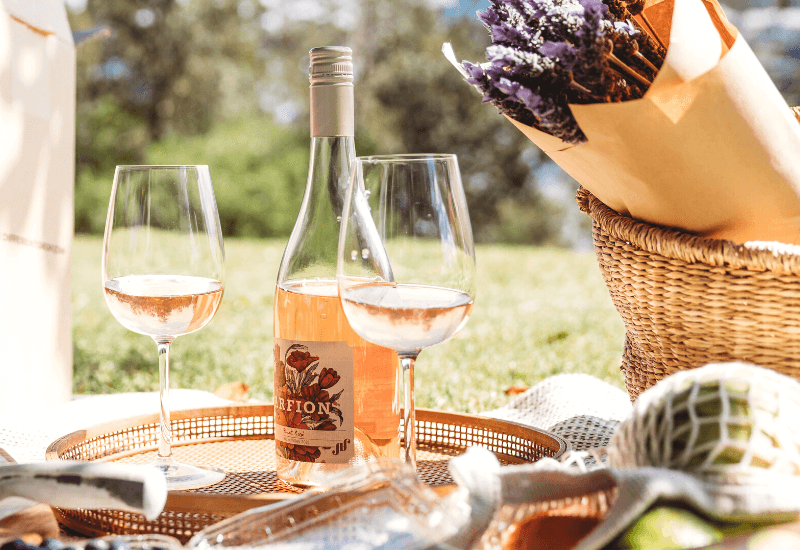It was twenty years ago today that hardly anyone drank Rose.
But these days your email inbox, your Instagram and Facebook feeds are clogged with Rose promos, celeb-endorsed or owned Rose labels, and pics of pink wine in ice buckets from all over the world.
It has entered both the wine mainstream and social drinking culture in a big, big way. So, how did this happen, and is this a good thing?
The answer to the second question is definitely yes. We drink a lot of Rose (and so should you!), but the first question is trickier to answer.
What is certain, is that at the start of the 2010s and definitely by 2015, Rose sales in shops and restaurants were through the roof. It is relatively inexpensive and accessible to all, and that is certainly part of it. Some of the old school Roses such as Mateus were waning in popularity, so a new wave of drinkers weren’t quick to judge Rose for its unfortunate past in the '80s, where sweeter styles were all the range.
It is also a very photogenic wine style, perfect to get all those likes on social media. The key to its 'glow up' might be that simple.
The Rose boom has, simply, been spectacular. So let's get in to the nitty gritty.

Some Boring Rose Basics:
How Is Rose Made?
Rose wine is made from red grapes, that much you might already know.
With very few exceptions, the juice of these red grapes is clear, even the likes of thick-skinned grapes such as Shiraz and Cabernet Sauvignon. The colour of red wine comes from the skins of these red grapes.
So red wine is made from mashing up the grapes to get the colour from the skins into the grape juice. There are more proper terms for this (maceration), but we prefer the technical scientific term of 'mashing up'.
Rose wine is just made with less mashing up of the skin and juice, with the maceration process often only being a few hours, rather than the days and weeks that happens with red wine. When the winemaker is happy with the colour, they separate the skins and juice by pressing, then fermentation begins.
This is essentially also how white wine is made from white grapes - but we digress.
Methods of Rose Production:
Most Rose is made using this ‘direct press’ method, where the whole batch of grapes is made into Rose. You may also see the term ‘Saignee’, which is the French word meaning ‘bled’. This style of Rose is a by-product of normal red winemaking where a small portion of the wine is bled off early in the process and kept apart to be made into Rose.
A third style of Rose is to simply add a bit of red wine to white wine to darken the colour. This is a style seen mostly in Rose Champagne production where about 5-10% of red wine is added to the base wine to give it that pinky orange hue (and to charge about $100 more a bottle).
Best Varieties For Rose:
Rose is mostly made from grapes with thinner skins and less natural colour, such as Grenache, Cinsault, Nebbiolo and Pinot Noir, though Rose is pretty much made with all red grapes nowadays, such is its popularity.

Rose Myth-busting:
1. Darker colour = a sweeter wine.
Untrue, and largely perpetuated by the super clear, super dry wines of Provence. It’s a better indication of more skin contact, so perhaps more tannin and complexity.
2. It can’t make a great wine.
Also untrue, there are some memorable wines of texture, depth and cellarability in both Australia and Europe. The great wines of Bandol such as Tempier, Gros Nore and Pibarnon are powerful, evolving wines that even need time in the cellar. In Australia, Rose made from Pinot Noir might make the most complex and fascinating wines - we’re looking at you By Farr and Eastern Peake!
The current market fascination with light, chillable reds has also blurred the lines between Red and Rose, and this is no bad thing. Red vs Rose is not a black and white breakdown, there are degrees of skin contact and all shades of colour. Quality is the key, not a generic, easy definition.
Speaking of quality, we spoke to one of Australia’s Kings of Rose, winemaker Nick Spencer. According to Nick, we are too obsessed with colour in Rose, aiming to make a wine to fit a certain colour palette, and perhaps an insta post.
“The key for Rose is balance, with soft acidity rather than fruitless overly-acidic wines that are hard to drink with abandon.”
- Winemaker, Nick Spencer
Alongside his eponymous Nick Spencer Wines, Nick is developing a new Rose-specific range that will explore the more interesting and ‘gastronomic’ possibilities of Rose. Look out for those wines in 2023...

Long Story Short:
There's a whole lot of reasons so many people have flocked to Rose recently, and perhaps the most prevailing one is the simplest: they can be downright delicious. A lot of them are budget friendly, and for the most part, ready to be enjoyed early in their vinous life. They're great to share with friends over brunch, lunch, or no meal at all.
So drink pink, we say, and imbibe with great abandon!
To continue an exploration of all the great (and great-value) Roses from Australia and around the world, shop Rose right here!
[product align="left" limit="8" cols="4" handle_collection="Rose" hover="base" hide_pagination="true" hide_buttons="false" use_countdown="false" loop_countdown="false" collection_countdown_style="dark" ]


